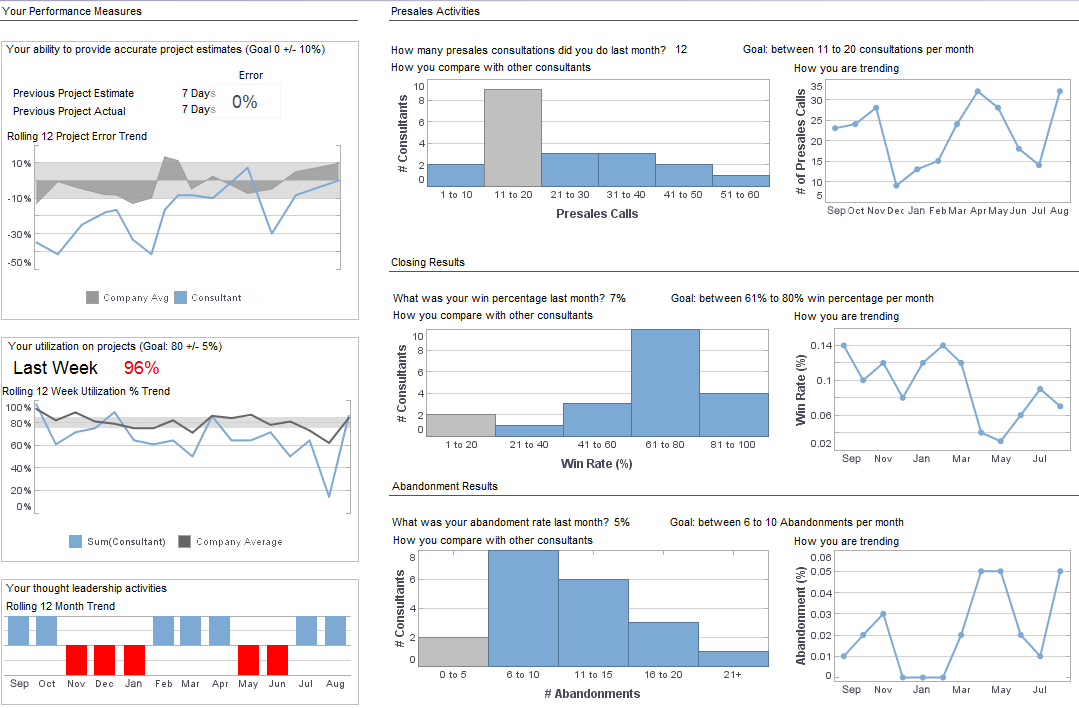InetSoft Webinar: Web Based Reporting, Budgeting, and Forecasting
This is the transcript of a Webinar hosted by InetSoft on the topic of "Web Based Reporting, Budgeting, and Forecasting." The speaker is Mark Flaherty, CMO at InetSoft.
Today we were going to talk about Web based reporting, budgeting, and forecasting. What I thought I would do for today’s session is first start with the CFO’s view point of budgeting and forecasting and the fact that I think many CFO’s look at this budgeting and forecasting practice from a standpoint of two major elements. The first one is about achieving our business objectives. How do we relate our strategic plan and our mission, our vision, and our goals to our budgeting and reporting process?
Then the other major view point here is really how do we streamline our business intelligence operations? How do we effectively gather and compile all the data for our budgets and reporting? How do we improve our analysis processes? How do we allocate all the resources to complete the budgeting process?
As most of you know, the budgeting process is a lengthy process. It takes typically months to complete, and so then what I thought I would do is walk through the typical budgeting process that you have before installing a Web based budgeting and reporting application. In the typical scenario we have an accountant who creates a variety of spreadsheet templates which everybody uses on their own.
How Financial Managers Can Improve Their Budget Reporting Process
Financial managers create those Excel files for the different department heads, different business types, and all the budget holders. They create templates that do not always look alike, but they are creating them and populating them with the previous year information and specific planning assumptions.
Once they have compiled all the templates, then the next task is to specifically distribute those templates to all the budget holders, the people who are going to actually fill those in. Sometimes in a simple scenario we have one template filled in by one person or multiple people within the department. In a more complex scenario we have be a hotel that has a casino so all of my casino activity goes to one budget holder. My hotel activity or revenue goes to another budget holder and may be my expenses go to a third person. But you can see how quickly it spiders out in the distribution process making sure that everybody has got their templates to begin entering data. It can be quite a task to manage this process.
 |
Read how InetSoft saves money and resources with deployment flexibility. |
Moving down the line, once everybody has entered some data into the planning spreadsheet, they send it back to the accountant or the budget controller who is going to take all of those templates, and they put the data into some type of a data warehouse or a back office accounting system, something to where they can actually compile the budget from all the numbers. Again it is a very time consuming process a lot of times. There are control issues keeping track of who has sent back their templates and who hasn’t.
Or, they sent one, and then later they decided to make some corrections they sent a second template. Which one do you use? How do they name it? Do they send it in the same methodology? Was it approved properly? After the current compilation process is done we now can end up with a budget. That budget would then be obviously distributed to the stakeholders, meaning typically upper level management, who wants to ensure that all of the business objectives are being met.
In most cases, they kick off a round of revisions. You have to go all the way back into the distribution process if there are some major changes in scenarios or expectations or the market forecast assessment. You might have to send it all the way back to the budget holders and all the way back to the stakeholder. Eventually through this process we end up with finalized budget. It then typically goes back to that accountant who in turns enters it up into the back office or to a data warehousing system.
 |
Read why choosing InetSoft's cloud-flexible BI provides advantages over other BI options. |
The Problems of Inefficient Business Intelligence Are Self-Evident
I am sure that there are a lot of you who have gone through this process. The main problems are self-evident. The process is predominantly made up of manual processes. Even in the scenario I gave for automating the actual budget capture or data entry through a spreadsheet, there is the manual process of distribution and compiling and tracking and uploading. It’s quite extensive.
It’s template driven and error prone. You run into a lot of errors in these spreadsheet models simply because if somebody updates a row and forgets to update a total obviously the propagation of the information throughout the system can become difficult. You always have challenges with what happens if somebody changes the template, and you didn’t expect it. They add a new account number they change an account number in it. And so when you pick it up as send out new templates to people, all of which in line 10, there is a count of 1,000 that somebody changed it 1,100 is that going to propagate. Are you going to catch that error on upload or compilations?
| Previous: The Problems With a Manual Financial Budgeting and Reporting Process |


